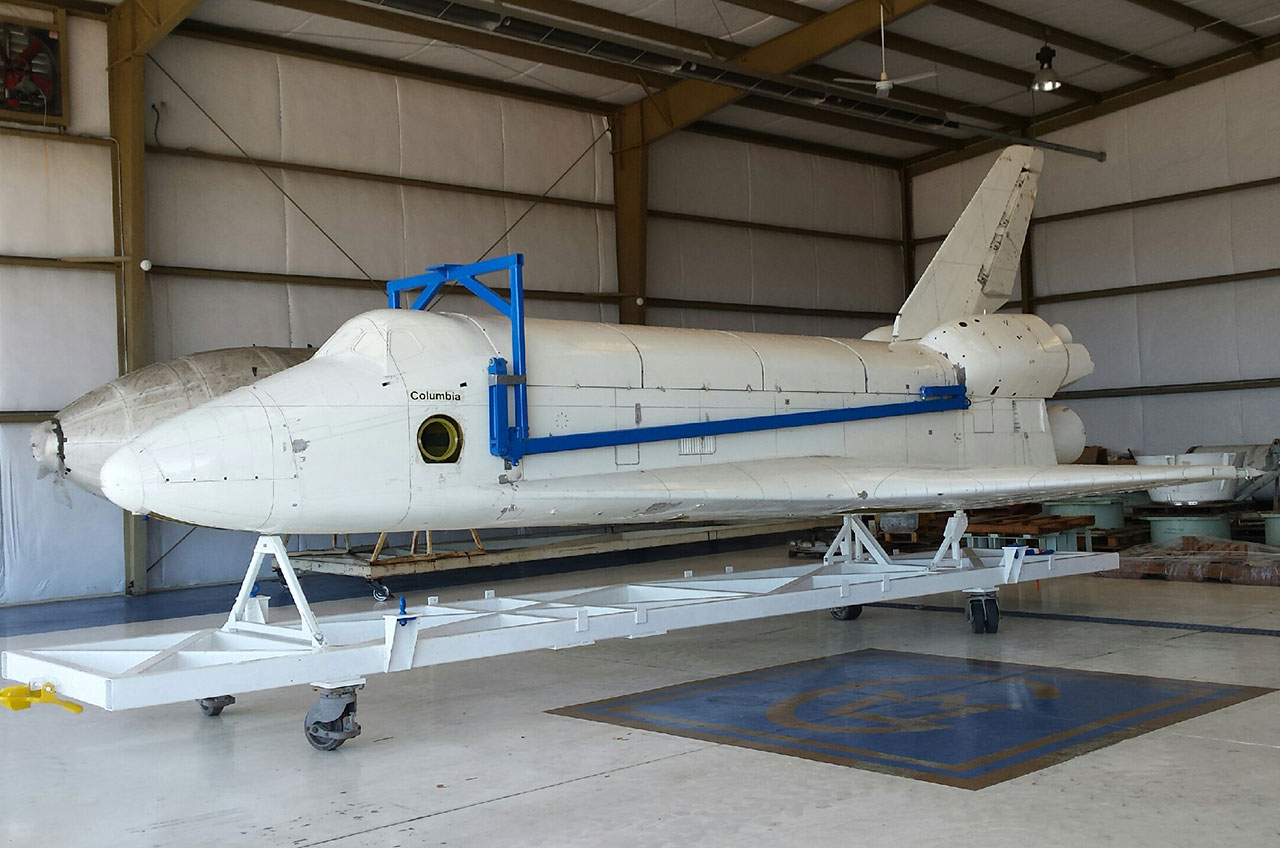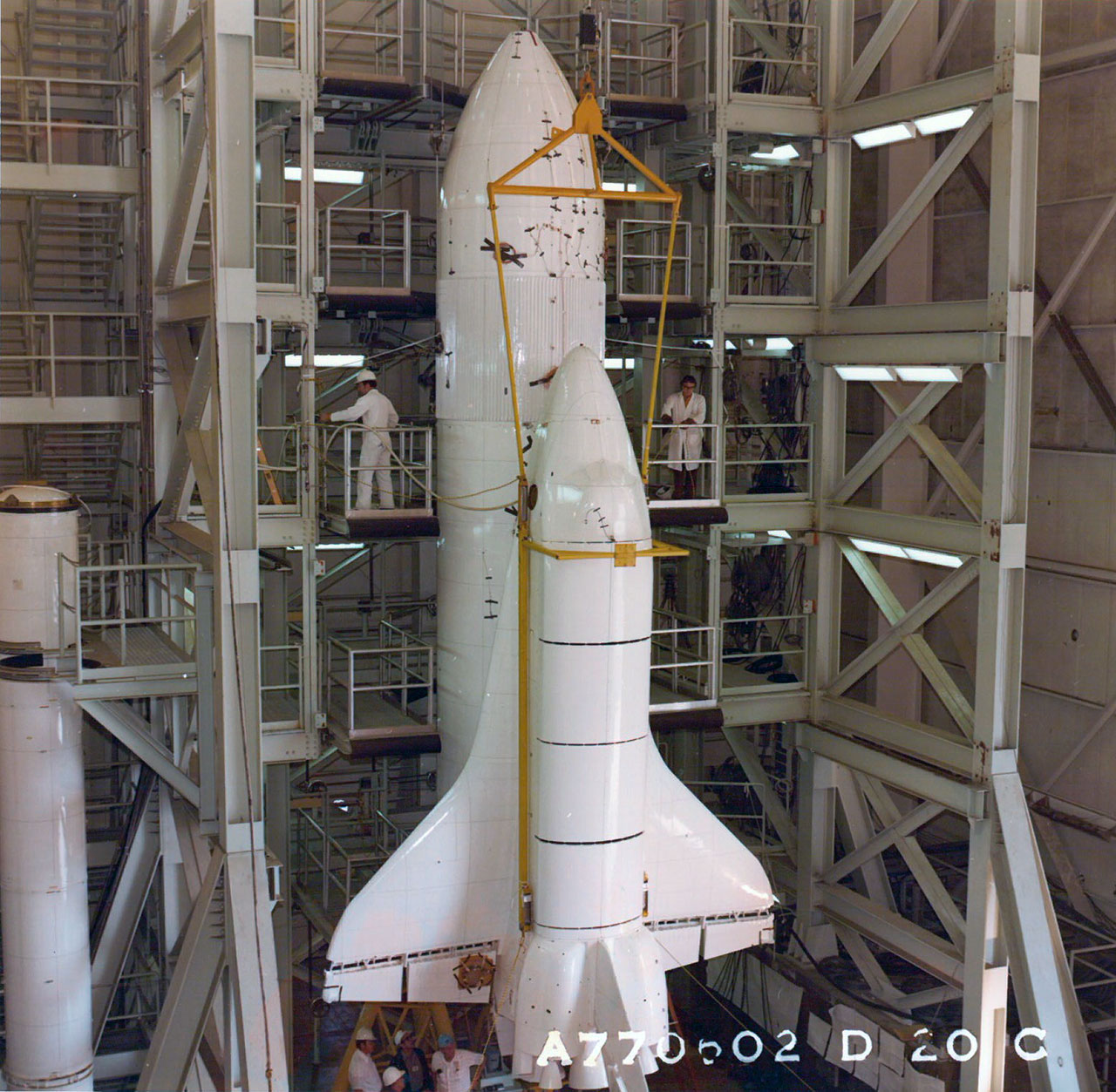NASA Quarter-Scale Space Shuttle Model Lands in Georgia for Display

The largest sub-scale engineering model of a NASA space shuttle ever built has touched down at a Georgia airport, where the almost five-story-tall test article will be stored until its public exhibit is ready to launch.
The quarter-scale space shuttle was delivered on a flatbed truck to the Flightways Columbus hangar at the Columbus Airport on Monday (March 8) to wait for its future display to be funded and built at Columbus State University's Coca-Cola Space Science Center.
"An extraordinary artifact from NASA's shuttle program is coming home to Columbus," the center stated in a release. "As a prototype, this [replica] served a vital function in the development of America's space program. As an artifact, it is an irreplaceable part of our nation's heritage." [NASA's Space Shuttle Program In Pictures: A Tribute]
The 30-foot-long (9 meters) orbiter, with its companion 38-foot-long (11.5 m) external tank and twin 37-foot-long (11 m) solid rocket boosters, were built in 1974 to address an issue NASA was facing in proving that its then-new space transportation system could withstand the stresses it would encounter during launch.
"One of the most difficult engineering challenges was that this complex, reusable system could not be flown for test purposes without astronaut pilots at the controls," officials at the space science center described. "This circumstance created the dangerous reality that the first time the space shuttle flew, humans would be on board."
A full size mockup, Pathfinder, and a prototype, Enterprise, were used for certain trials, but neither could put the entire stack through its paces during vibration and structural load testing. The solution was the quarter-scale test article.
The replica was large enough to simulate all of the primary structural elements and joints of the space shuttle, without exceeding the limitations of the available test facilities.
Breaking space news, the latest updates on rocket launches, skywatching events and more!
"They chose quarter-scale because [if you made a vehicle] that is scaled in proportion ... you had to have some sense about what's important," said Don Emero, chief engineer of the space shuttle program at Rockwell (now Boeing), in a 2010 oral history.
"We have lots of small pieces of structure, like vent doors and so forth, that are not necessary to replicate ... they just go along for the ride," Emero continued. "Whereas other things, like the access door to the [orbiter] mid-body, were replicated. The scale is chosen such that you can actually make some fasteners. Once you get a smaller scale, like one-tenth, then you can't even see the fasteners you have to use."
The scale replica was tested in a variety of configurations, including variable loading of the external tank and rocket boosters, enabling replication of the most critical stages of the shuttle's flight to space.
The orbiter came to Columbus from Canada, where it was on display at the Calgary International Airport for 14 years. NASA awarded the engineering artifact to the Coca-Cola Space Science Center for its permanent display.
"Your model, the [prototype] shuttle Enterprise and space shuttles Atlantis, Discovery and Endeavour encompass the [program's] most extraordinary components," wrote Robert Sherouse, transition manager in the Office of Infrastructure at NASA Headquarters, in a letter to the science center.
The quarter-scale space shuttle will remain in storage, first at the airport and then at the university until the Coca-Cola Space Science Center can raise the funds to build its new display.
See more photographs of NASA’s quarter-scale space shuttle at collectSPACE.com.
Follow collectSPACE.com on Facebook and on Twitter at @collectSPACE. Copyright 2016 collectSPACE.com. All rights reserved.

Robert Pearlman is a space historian, journalist and the founder and editor of collectSPACE.com, a daily news publication and community devoted to space history with a particular focus on how and where space exploration intersects with pop culture. Pearlman is also a contributing writer for Space.com and co-author of "Space Stations: The Art, Science, and Reality of Working in Space” published by Smithsonian Books in 2018.
In 2009, he was inducted into the U.S. Space Camp Hall of Fame in Huntsville, Alabama. In 2021, he was honored by the American Astronautical Society with the Ordway Award for Sustained Excellence in Spaceflight History. In 2023, the National Space Club Florida Committee recognized Pearlman with the Kolcum News and Communications Award for excellence in telling the space story along the Space Coast and throughout the world.



